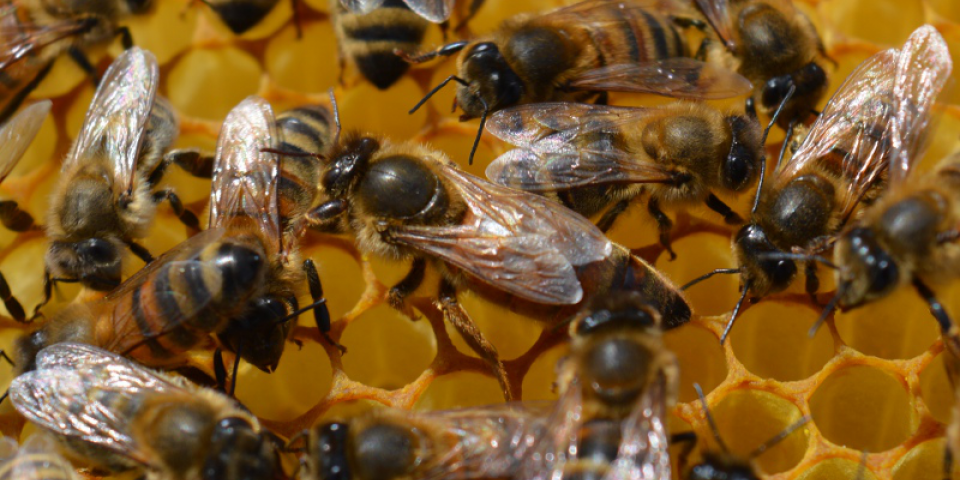- Posted By: jenifer
- Comments: 0

I don't normally blog about the bees I look after at work, although I probably should as they are also under my beekeeper wing as it were but having struggled to keep this colony going through last year and expecting the worst after the long drawn-out winter months and cold snap, I genuinely couldn't believe what awaited me today on the very first inspection of the year. And this is what I saw - a beautiful new queen that superseded the old queen last Autumn heading a very strong and health colony of honey bees.
Spending time watching the entrance of a beehive is a great way to understand what is going on inside the colony. Walking towards the colony I could see the bees were very busy bringing in loads of pollen. This little lady had her pollen baskets loaded with yellow pollen from pussy willow. Notice all the pollen granules sticking on her body hair. When bees collect pollen, they moisten it with a little bit of nectar so that it will stick together when they push the pollen with their front legs down onto their back legs. When the foragers return to their hive, they offload the pollen to the workers inside and head back out again. Unlike other pollinators, honey bees work one source of pollen or nectar source until they have worked it all before moving to something else. Compare this to a bumble bee, for example, where you will see them going from one type of flower to another.

Honey bee laden with pollen which will be used to make ‘bee bread’ to feed young larvae.
Bee bread is made up with pollen (protein), nectar (carbohydrate) and water.
OK… this was the real surprise. I wasn’t expecting this many bees to be honest. Beekeeper friends have been opening their hives to find their colonies have died out or they only have about 3-4 frames of brood (there are 11/12 frames in a brood box). Opening up the colony, I counted 7 frames of brood nicely covered. Not only that, the young queen was also laying eggs in the super frames (where they normally store their honey). First thing I did was… panic! Yep, it happens! But the thing is when beekeeping is to do just the opposite of that.

Honey bees returning with pollen while workers gather outside the hive during first inspection.
Normally the bees are inside on their frames, but I had a lot of shuffling around to do yesterday so they hung around outside!
Taking a deep breath, I worked slowly and methodically through each of the frames to check for any signs of disease as well as checking for all stages of brood. I’m looking for 1-3 day old larvae and larvae right up to the stage where they feed the larvae with their bee bread before capping and leaving the larvae to emerge and join their colony. Checking for eggs is another way to judge how the colony is doing, especially if you don’t see the queen as it indicates that she is around if you see day old eggs and hadn’t noticed her at a previous inspection.

This is the brood box with quite a lot of activity going on.
That’s honey sitting on top of the middle three frames that I had to prise off the cover before I could see inside the brood box.
The colony isn’t out of the woods yet. Looks can be deceiving. The weather is improving but we’re still having a number of cold and wet days which will prevent the bees from flying and will rely on the stores they have inside. But the signs are looking very good I’m pleased to say.
Don’t forget, if you’ve got dandelions in your gardens, if you can live with them in your lawns and flower beds, please leave them to flower as they are vital sources of food for honey bees and other insects.
The image used has been published under the terms of a Creative Commons License and is attributed to Jenifer Tucker.
